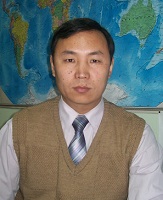On the geological roots of some toponyms in Tuva
Keywords:
Tuva; toponym; toponyms of Tuva; hydronyms; geology of TuvaAbstract
Apt folk names for mountains and ranges, notable locations, streams, rivers and lakes have long been of interest for travelers and researchers. Tuva is no exception to that: among those who wrote on its toponymics are P. Krylov, S.I. Vainshtein, A.K. Sibilev, B.K. Ondar, etc. The article deals with a number of Tuvan toponyms which are relevant to the studies of geology and geomorphology. We believe this should become one of the directions for future research.
The name of area and town in western Tuva – Ak-Dovurak – comes from the monomineralic aggregates of magnesite (magnesium carbonate, MgCo3, which is white in colour). The names of such rivers as the Ak-Sug and Ak-Hem (Todzha kozhuun (raion)), the Ak (Barun-Hemchik kozhuun) and Lake Ak-Hol (Mongun-Taiga kozhuun) reflect the character of these waterways which take their waters from the melting snow patches in the highlands. Metaphorically speaking, the name ‘ak-Sug’ refers to the waters of heavenly origin, as opposed to the ‘kara-sug’ – earthly or underground waters.
Aldyn-Uurgai (lit. ‘gold mine’), an arjaan (spring) in Erzin kozhuun, took its name from the placer gold deposit near the arjaan. Dus Dag (‘the salt mountain’) is located about 15 km north from Lake Ubsu Nur and is known for a deposit of halite.
Overall, in this article we look at the history of 22 toponyms, including the Dustug-Hem (‘salt river’), a right-bank tributary of the Shui; Dustug (‘salt’), a small mount in Todzha; the Izig-Sug (‘hot water’), an arjaan; the Kyzyl-Hem (‘red river’), a river in the east of Tuva; the river Kyzyl-Tashtyg (‘with red stones’); Mount Ottuk-Dash (‘tinderbox’) in Ulug-Hem kozhuun; Ush-Beldyr (‘a confluence of three rivers’), an area and arjaan in the east of Tuva; and the Charash-Tash (‘beautiful stone’), a mountain range on the left bank of the river Maganattyg, a right-bank tributary of the River Shui in Bai-Taiga kozhuun.
References
Arakchaa, K.-K. D. (1995) Slovo ob arzhaanakh Tyva [A word on Tuva’s arjaans]. Moscow, PoliKom Publ. 24 p. (In Russ.)
Vainshtein, S. I. (1957) Ocherk etnogeneza tuvintsev [A sketch on the ethnogenesis of Tuvans]. Uchenye zapiski TNIIIaLI, vol. V. Kyzyl. Pp. 178–215. (In Russ.)
Vainshtein, S. I. (1961) Tuvintsy-todzhintsy [The Tojin Tuvans]. Moscow, Vostochnaia literatura Publ. 218 p. (In Russ.)
Krylov P. (1903) Putevye zametki ob Uriankhaiskoi zemle (rotaprint izd. 1903 g.) [Travel notes on the Uriankhai land (a reprint of the 1903 edn.)] Kyzyl, Kyzyl Books Publ. 167 p. (In Russ.)
Ondar B. K. (2007) Toponimicheskii slovar' Tuvy [A toponymical dictionary of Tuva]. Kyzyl, Tuva Books Publ. 552 p. (In Russ.)
Sibilev A. K. (2006) Nefrit — tainstvennyi kamen' [Jade: a mysterious gemstone]. In: Vokrug serdtsa Azii: sbornik stikhov i prozy tuvinskikh geologov i ne tol'ko… [Around the heart of Asia: A collection of poems an prose written by Tuvan geologists and more…]. Kyzyl, TuvIKOPR, SB RAS. Pp. 168–199. (In Russ.)
Sugorakova A. M., Iarmoliuk V. V. and Lebedev V. I. (2003) Kainozoiskii vulkanizm Tuvy [Cenozoic volcanism in Tuva]. Kyzyl, TuvIKOPR, SB RAS. 92 p. (In Russ.)
Tatarintsev B. I. (2002) Etimologicheskii slovar' tuvinskogo iazyka [An etymological dictionary of Tuvan language]. Novosibirsk, Nauka Publ. Vol.2. 388 p. (In Russ.)
Tuvinsko-russkii slovar' (1955) [A Tuvan-Russian dictionary] Moscow, Gosudarstvennoie izdatel’stvo inostrannykh i natsionalnykh slovarei. 724 p. (In Russ.)
Iarmoliuk V. V., Kozlovskii A. M., Kudriashova E. A., Lebedev V. I. and Sugorakova A. M. (2004) Krupneishie dolinnye izliianiia v kainozoe Azii: osobennosti stroeniia, sostava i usloviia formirovaniia «lavovoi reki» doliny Malogo Eniseia [The largest Cenozoic valley lava flows in Asia: Structure, composition and preconditions for the “river of lava” in the Little Yenisei valley]. Vulkanologiia i seismologiia, no. 4, pp. 3–20. (In Russ.)
Published
How to Cite
Issue
Section

Author(s) license holder(s) grant rights for their work to the journal (grantee of a license) under the simple non-exclusive open license in accordance with Art. 1286.1 «Open license for a research work, work of literature or fine arts», Civil Code of the Russian Federation.
New Research of Tuva publishes articles under the Creative Commons Attribution-NonCommercial license (CC BY-NC).
Since it is an open license, author(s) reserve the right to upload the article to their institutional repository, submit it to another journal (if it allows republications), or republish it on their own website (in full, or in part).
However, several conditions apply here:
a) The republished version must always contain the name(s) and affiliation(s) of the author(s), the original title and the hyperlink to the original version on the New Research of Tuva website;
b) It must be in open access, free of charge, and no category of readers must be in any way whatsoever advantaged over general readership.
c) should the contribution be submitted elsewhere by its author(s) without substantial modification (30% or more of original text unchanged), the body of the article should contain a disclaimer that the original version was published in New Research of Tuva (with a link to the respective page)
The CC-BY-NC is a non-revocable license which applies worldwide and lasts for the duration of the work’s copyright.





